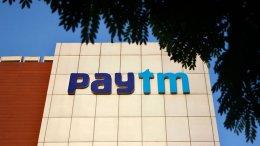Plain electronic commerce will soon go out of fashion if it hasn’t already. Now it’s social commerce, which is what entrepreneurs and investors alike are betting on these days. It encompasses the whole gamut of online collaborative shopping activities such as shared lists, ratings, user reviews, advice and recommendations, and shared coupons.
The premise of social commerce is simple. Someone, somewhere, has already bought what you are about to buy. And they are willing to talk about it. It benefits retailers because they will have increased and more engaged traffic and higher conversions. It benefits users because a friend who has tested and tried something is a much more authentic and reliable source of information than a billboard.
The phenomenon of social commerce, however, has been around forever – in an offline world. Say you were travelling in a Brougham carriage in Victorian England, and needed a watering hole to rest your horses on the way. You asked people you knew. That was social commerce. However, the online revolution is taking this to the next level in scale and depth.
The term ‘Social Commerce’ first came into Internet lexicon five years ago when Yahoo wrote that in a blog. The trend has caught on now. Call it the Facebook conditioning. More and more people are spending more and more time online, often playing interactive social games. More and more offline interactions are getting pushed on the Web.
So a host of companies such as Groupon in the US and SnapDeal in India have emerged in the social commerce space. You can shop Pampers from Facebook, thanks to Amazon webstore. Retailers like Macy’s and Sears, and drugstore chain Walgreens are also on the social commerce bandwagon. Macy’s launched a Magic Fitting Room where they did social commerce with mirrors (or the 21st century equivalent - iPads and Windows 7 gesture control) and Facebook. Both Sears and Walgreens on the meanwhile have added social layers to their websites.
What is driving this trend?
VCCircle attended a seminar on social commerce last week organized by the Silicon Valley chapter of TiE. The panelists included Siva Kumar, Founder & CEO, (a vertical search engine for shopping), Julia Kung, Director, Marketing, Moxsie, Inc. (an e-commerce start up that sells merchandise from independent designers), Jai Rawat, Founder, CEO, ShopSocial.ly (a social commerce start up), and Bipul Sinha, Principal, Lightspeed Venture Partners. The discussion was moderated by Sandeep Aggarwal, Managing Director, Caris and Company.
Lightspeed’s Sinha compares social commerce as the online equivalent of hanging out with one’s friends in a mall. Fun, sharing, entertainment are all aspects of the ‘event’. Purchases can be impulsive. ‘Discovery’ is the underlying motive of these interactions (rather than intent). TheFind’s Kumar adds that Amazon had a process for writing reviews; but sharing something is so much easier now, and happens in an instant with sites like Facebook and Twitter.
ShopSocial.ly’s Rawat clarifies, human behavior has not changed suddenly (people like to share, always did); the opportunities to share this much and this fast did not exist earlier.
Which products work in social commerce
Rawat points out the difference between search goods (say cameras) and experience goods (say, service providers). “How do you find a doctor?†he asks the audience. He gives the example of a solar panel provider, whose average installation costs ran into $40,000, but who gets all his business through word-of-mouth. All his commerce is social commerce, come to think of it!
So there are certain products that work better in social commerce. Kumar says taste-driven products like shoes or clothes will get a huge boost from social commerce. If a water heater breaks down, people look around for people they know who may have recently got a water heater. Thus, what is essentially a ‘search’ has an inherent social context here.
Sinha talks about friends and first degree connections on social networks. If one likes a spa, chances are one’s immediate friends may like it too, whether or not they chose to go visit the spa immediately. He underlines the difference between discovery and intent traffic, and says in the next several years traffic from social commerce to retailers will increase, but it would be discovery traffic.
If one takes 100 average Internet users, 90 of them read what is online, nine of them may comment occasionally (short statements like ‘I love this product too’) and about 1 user will write reviews. Social commerce businesses will need a lot of users in the latter category.
Challenges of social commerce
Social commerce as a business may have low barriers of entry, but it also means that there is a lot of clutter and noise. The key is how you stand out as a social commerce business. Moxsie’s Kung says she tries to engage the user and keep them involved with things like buyer chats that involves the user at the design process for some of her products.
Broadcasting discounts is something that may not work. The reader or the recipient cannot be contextually deprived - say, being sent a restaurant coupon or review when she is not interested in eating at that particular point.
Sizing up the impact of social commerce and measuring its impact is yet another challenge. Cost-per-lead, cost-per-sale, cost-per-click are all prevalent business models. Cost-per-acquisition or cost-per-action is a more obvious choice especially for the retailer, but Kung points out that it can be very difficult for everybody to agree on what exactly was a happy CPA.
The jury is still out on how exactly to measure successful social media campaigns, especially with not enough social analytics metrics and measurements currently available. A lot of the benefits like engagement and awareness may be intangible, and hard to size up.
The fine line between social norms and market norms, says Rawat, will be a challenge. He mentions the example of Amway in the context of commercializing behavior. If one starts selling to all one’s friends, one may not have a lot of friends left.
When will the VCs want in
The shift to social commerce can be as big as the shift from offline to the Internet, says Sinha of Lightspeed Venture Partners. He adds that VCs will be more inclined to invest in a company that is showing some stride - say if it has a user base of 100,000 or 200,000 users and is growing at a steady rate every month.
He adds that unless a company has actually somewhat established itself, and proved that its ideas work, investing for a VC would be betting on people’s preferences and what they may or may not be inclined to do, rather than believing on the company.
Sinha asks, will the product be useless if you take the social graph out of it? If yes, only then can it be called a social product.
He is looking for stand-alone companies in the social media space to invest in, and not companies riding as add-ons on existing sites like Facebook.
The outlook for Indian e-commerce
The panelists discuss with VCCircle on what lies ahead for Indian retail.
First, mobile platforms will be the access point of choice. Second, Indian retailers have to work on delivering service to their customers, online or off. Third, e-commerce will take a couple of years to arrive in India, but arrive it will, and Indian retail better be ready for when it comes.
Siva Kumar, Founder & CEO, TheFind: E-commerce in India will take some 1.5 years to really take off, so maybe around 2012, we will see a spurt of growth. Right now in India, there is just not the kind of bandwidth needed that can sustain ecommerce as a channel. Mobile phones and iPad-like devices will be used to get on the Internet for e-commerce more than PCs.
Jai Rawat, Founder, CEO, ShopSocial.ly: The e-commerce situation in India is going to change in the next two to three years. But before that can happen, the key thing for Indian retailers to realize will be that every customer will have a voice now, and fix their service issues. People need to know what they are ordering over the Internet will be delivered to them. MakeMyTrip and FlipKart are two companies I am talking to, but nothing has been finalised yet.
Bipul Sinha, Principal, Lightspeed Venture Partners: Right now in India, smart phones cannot deliver the kind of speed and graphics needed to shop for digital goods (other than things like ring tones). Group texting services like GroupMe or mobile chat services like Fast Society can have tremendous potential in India.
Julia Kung, Director, Marketing, Moxsie, Inc.: I am not too familiar with the retail scenario in India, but a lot of people back at work know and talk about it.





